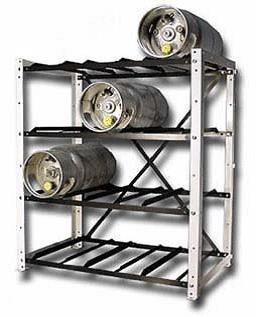Terms & Conditions
Terms & Conditions
Storing forklift liquefied petroleum gas cylinders

What is the problem?
Forklift liquefied petroleum gas (LPG) cylinders being
placed upside down.
What are the risks?
Forklift gas cylinders are fitted with relief valves
designed to face upwards in the upper portion of the
cylinder where the vapour space is.
When a cylinder is placed upside down, the relief
valve may be submerged within the liquid of the lower
portion of the cylinder.
This can cause liquid content to be discharged if the
relief valve opens as a result of excessive pressure,
such as during a fire or in high temperatures.
This pressure means the valve can release a greater
than normal amount of liquid, expanding the gas
volume outside the cylinder.
If the relief valve discharges liquid content, workers
are at risk of death from a potential explosion or fire
and serious injury, such as severe burns.
What is a solution to the problem?
The risk of death or injury can be eliminated or
reduced by:
• keeping used and unused LPG cylinders in the
correct upright position when not fitted to a forklift
• ensuring the relief valve is oriented upward when
the cylinder is horizontal, such as when attached
to a forklift
• locating unused and used forklift gas cylinders in
separate areas or implementing a system to tag
or mark used cylinders for collection and refilling
• ensuring workers are fully trained in the handling
and transferring of LPG cylinders.
Australian Standard
AS/NSZ 1596 – The storage and handling of LP Gas
Storing forklift LPG cylinders upside down submerges the valve
in liquid content and can result in an explosion or fire.
Ensure LPG cylinders are stored upright. If they are lying down,
the valve should be in the vapour space, not submerged in liquid.
Terms & Conditions